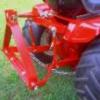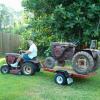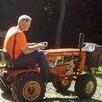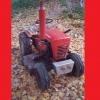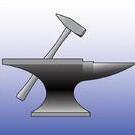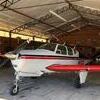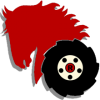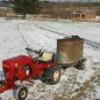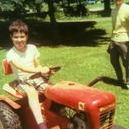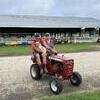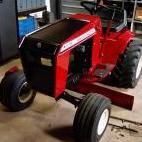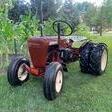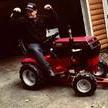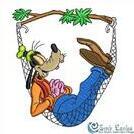Leaderboard
-
in all areas
- All areas
- Markers
- Marker Comments
- Marker Reviews
- Articles
- Article Comments
- Article Reviews
- Classfieds
- Classified Comments
- Classified Reviews
- Wiki's
- Wiki Comments
- Wiki Reviews
- Blog Entries
- Blog Comments
- Images
- Image Comments
- Image Reviews
- Albums
- Album Comments
- Album Reviews
- Files
- File Comments
- File Reviews
- Posts
-
Week
-
All time
November 28 2011 - November 8 2025
-
Year
November 8 2024 - November 8 2025
-
Month
October 8 2025 - November 8 2025
-
Week
November 1 2025 - November 8 2025
-
Today
November 8 2025
- Custom Date
-
All time
Popular Content
Showing content with the highest reputation since 11/01/2025 in all areas
-
20 pointsWe took a 4 day outing up to The White Mountain National Forest on the Maine/ NH border off Route 113. Awesome trip! Here's a pile o' pics...
-
19 pointsJust a small job today. The plastic instrument panel cover/lens of the GT18 was a bit yellowed and cloudy to say the least. Here's how it looked before cleaning: After about 30 minutes of rubbing compound, polish, wax...and elbow grease...it turned out pretty decent. Not quite as clear as glass, but not bad: I do run out of elbow grease once in a while, but usually a hot shower, a favorite libation or two, and a good night's sleep replenishes the supply.
-
17 pointsAnother 3 point build because of course I needed just one more... This tractor is much like several others I have, being a mix of parts to make it how I wanted it. Frame and tranny from a C-120, sheet metal from something in the 60s, front axle and rear wheels from a 520, V twin Vanguard engine, LEDs front and rear, and pretty much anything else that could be upgraded has been. The 3 point isn't by itself, and the dash tower, lifting mechanism, and toolbox were greatly overbuilt to take the weight of the rear lift. Anyway, another custom in the Herd!
-
16 pointsBuilt this for my son to play with. Made to look like a 1962- 1964 but actually a 1967 L157. The dash tower/ tool box was cut and welded up to match a set of Suburban fenders. Also added an 8 speed transmission and Kohler K181 because I'm allergic to Techumseh. Changed over to 6 inch front wheels and added running boards for safety. Also has a reciever hitch integrated into the toolbox.
-
15 pointsStarted another one a little while ago. Again all entirely done without using any power tools . I am continually asked why . Sometimes it sounds like people think I like to torture myself but it’s much deeper than that. Besides the cultural aspect of it, if I don’t use what was handed to me the way it was handed, it will be lost first by me and consequently by others not having the opportunity to see what is possible without relying on machinery . On a deeper level I like to feel what they felt and to decipher not only the why but also the how of the parts they didn’t have the chance to teach me. Many of those are not even possible with power tools. When that happens they are many times outright emotional moments of accomplishment unequaled by any other time. With your indulgence like before I’ll continue posting its progress as I go along. It all starts with some ideas and a drawing. Always with strong influences from the ones before modified to reflect my own ideas but still respecting and acknowledging the originals. The material comes next. Carefully selected and guarded for many years waiting for this moment. Ash the traditional species used for this due to its strength and flexibility under load or stress. As is from the mill from now on no power tools will touch it. Flattened , straightened , unwound , and reduced into a certain thickness to start the process. a template is made of drawing to choose the best area of plank to use and to layout all the cutouts. Important to choose area of plank carefully since much of end product may have very thin or delicate areas which will be prone to cracking if not done so.
-
15 pointsI don't sleep on the ground. Never did. We've tried MANY ways to compensate for my fibromyalgia and related pains. This most recent tenting bedding setup has been the best. Far and away. We were using two cots zip tied together with a nice air mattress over them. Quite comfortable. The new camper setup.... even better. A LOT better. Trina bought a California King sized 8" thick 3 section memory foam mattress. It's wonderful. It's lovely. It's incredibly comfortable. I got THE BEST sleep I have in many years. We will be ordering an identical mattress for the home.
-
14 pointsFound a praying mantis on the shop floor today. I don't have much of a project going other than trying to solder some LED lights to make them blink or represent a campfire for the model train layout. I wrote "trying" because, it's getting harder to see where to solder and then my hands don't seem to be as steady as I need to solder these tiny connections. Thus I decided to take a break and that's when I found this praying mantis. It was probably 3~3 1/2" long. This bug entertained me off and on all afternoon. It didn't seem to have any place to go and spent most of the day on the spare folding chair in the shop. The most it moved was when I put it on the back of my hand and it would immediately crawl up the sleeve of my flannel shirt to which, up near my shoulder, I would allow it to crawl up onto the back of my other hand where it would start it's journey again. I killed a fly and a fed it to the mantis and a dying cricket as well. As I watched, it would use it front legs to hold the back legs and bring them to his face for grooming. It's days are numbered because we are expecting low twenties early next week. I zoomed in close and made a video of this creature so that the grandkids enjoyed at supper this evening. They were fascinated and so was I.
-
14 pointsAnother project going on here simultaneously with the yoke is another batch of hand planes .I just get bored with myself and am always looking at something else to start, always having at least two things going at the same time. This is a batch of 39 planes which are my signature tool and used to be carried many years ago by a prominent tool company in NYC. I have made quite a few of these in the past and it’s something I always enjoyed. Why 39 asked my oldest grandson. Well, I think 40 would put me over the edge and discourage me. With very few exceptions all the work is done with hand tools. The exceptions are due to the quantity being made so it expedites things a bit, otherwise ye olde shoppe gets backed up. I have been at it for a little while and I will demonstrate the process as I go along.
-
14 points
-
13 pointsToday is Election Day. Please vote. Regardless of your political beliefs. Billions of people around the world do not have a say in how they are governed. We do. Millions of Americans have lost their lives defending our right to vote. Honor that. A Republic, if we can keep it. Ben Franklin
-
13 pointsTwo years ago Kevin @Pullstartbrought me a truckload of Ipê and Ash scraps to the show. It has become a source of many projects . Here are just two of the latest. The first a new piece for the leg vise on my bench and the other one done by my son Alex, two planters for some vegetables built like a cage so they can survive the deer onslaught.
-
13 points
-
12 pointsWork started Friday of last week on my new workshop. Friday the footing was dug out, inspection on Monday, and then framing started yesterday. Everything is delayed about half a day due to the weather last Thursday. Proposed finish date is before Thanksgiving. Roofing went on today: And of course the kids had to climb. The inside wall will be attached to the old roof, and the whole roof redone: I've had issues with the scale. I measured the footprint in the shop at work before settling on dimensions, but without anything there to give a sense of scale it feels "wrong". So I got out the tape measure and some cinder block and started adding some points of reference. The two blocks against the wall are the foot-print of my bigger (home) tool box, approx 6x2. The other two out farther are roughly the spacing and position I want for the lift. With those in place it is starting to look more like how I'd expected size-wise.
-
12 pointsGot the shed built today! Now the chore of moving everything out there hopefully before it snows. Gonna have to wait till spring to spread stone around shed & under lean to. Probably do some landscaping & a ramp at the front
-
11 pointsTest fit and ran this little 3k WH genny this morning. Needs a little body work on the top cover but other then that it was complete and unmolested. It was a good find and runs good.
-
11 pointsTook the Ber Vac off the 520 and got it loaded for the trip to its new home tomorrow.
-
11 pointsThe atom is, by volume, 90% empty space. It looks like you have a lot of empty space in there, it's just in small pockets scattered everywhere across the floor. Try arranging your particles in a denser formation.
-
11 pointsAnd speaking of two wheels… bought another two wheeler, rode it home this morning (now that was cold!!). Used the heated handgrips…very very nice! 2013 with only 5900 miles.
-
11 pointsFinished fabbing the 3 point parts today. I think it'll work OK. Testing will have to wait for my top link, and it's delayed per tracking until next week. Anyway... Don (Lee1977) came by today, and dropped some common sense on me. I've grumbled about the drag links for a while because I just don't like how narrow they are due to the tiny bends in them. My acetylene torch is broken and nothing else will get hot enough to bend the 3/8 steel arms. Don suggested cutting them almost all the way and bending them to whatever I want and weld them back. As he said, nothing I can possibly pull with a 500lb tractor will break them. They turned out nice and the pic below is the top of one and the bottom of the other- just comparing to make sure they are the same now. I also fabbed up the top part of the hitch. Both lift links and top link will connect to it. And it installs with a 5/8 pin just like the drag links. It will be quick to remove and reinstall. Full up and down clear everything and still give decent amount of lift. It actually turned out pretty good. And finally a dash of red makes it look better, so tomorrow will be assembly and initial testing.
-
10 pointsTook the 60” off and cleaned/oiled it and wrestled my new to me 44” two stage on now just gotta weight the rear down and hope it wards off any snow lol
-
10 pointsI would avoid impact wrenches..Cast iron can be somewhat brittle. I use a reciprocating saw make a lengthwise cut in the bottm of the nipple until you just start to see threads then the pipe wrench will the usually collapse the nipple a bit so it will come out.
-
10 pointsHere is the completed hitch. Forgive the aluminum tube but my top link isn't here yet so it's just to hold the drag links out... Full travel- needs adjusted up some but that's easy. Is very smooth. I was afraid it would be hard to lift empty but it's like nothing is even back there. And I'm really glad I listened to Don and changed the drag links. They look much better and have more sway travel.
-
10 pointsWhat started out as a transaxle gasket replacement on Frankenhorse, has devolved into a much deeper adventure. Once I saw this ex-filter, I decided to go ahead and do a deeper dive. Now, I'm reading up on @daveoman1966's literature.
-
10 pointsGot the 701 zipped back up today but not before taking governor arm, speed disc, and bushing nut off, cleaning them up and making sure the moved like they were supposed to. Really helped with throttle control. Decided to leave muffler in its original color, for now. Should be good for another 65 years or more.
-
9 pointsI have had this metal building steel around 40 years decided to make a front weight out of it. Got it cut out and tacked together. Turn into a joint project with Kevin as he welded it up. Had enough steel left so I cut another one for Kevin. It has around 2" of sheet lead inside. Best guess it weights 50 #.
-
9 pointsTook my wife in for cataract surgery this morning, now that she has a patch over her eye she is going around the house saying ARGH Shiver my timbers Yarrr and the cats won't come near her.
-
9 pointsYep, not a blowable snow for 10 years. So it's going to NE Ohio to take care of the snow coming off the lake. Now I can plow the sloppy wet snows we get in the warm cab.
-
9 pointsGot her home today C-160 with a unique K431 engine It is a K341 but had a dyslexic label maker. She needs work...Engine is free but that is all I know.. Will be awhile before I get to her
-
9 pointsJim, That’s the same reel as the one on my 702 so I know it’ll fit that. It’s missing the lift rod and the bar that connects the pedal to the gearbox, which is what engages the mower. Both should be easy to make.
-
9 pointsWe need a pic of the dumpster! I'm trying to get my B-I-L to get one. I think he has a bunch of 76 4 dr. Plymouth Volare parts he can't seem to part with. English car eh.? Better stop at the store and get a couple of bottles of this.
-
9 pointsGave a 867 a bath before the washer goes nighty nite for the winter. What a greasy pig!!!! Pullstart brought this over from MI and I know fer sure we overpaid. Was having seller's remorse from sending another one back to Shynon but I needed his tool box worse. The crap was two inches thick on the motor & frame I kid you not. Spread the stuff out on the blacktop and walla ... seal coated. Never even tried to start it but probably wouldn't have taken much. Head gasket is blown among many other things. Nothing cobbled too bad that can't be reversed & strait sheet metal. good ags & orginal fronts in good shape. No sure what to do with it. Mechanical resto is right up my alley but missing lots of paint and don't think a touch up of rusty primer will do or look right. I've got a freshened up 181 shelf motor that is gonna go in it fer sure so partially dissembled it on the splash pad gut to get more crud off.
-
9 pointsThis morning before Sunday School Class started we were just sitting around shooting the breeze. One of our members drives for Amish clans in the area--and he stays quite busy I might add. Rodger was telling that he was hauling a family when they pass an Amish buggy with no top or cab and it was a cold morning. The wife asked her husband "Why isn't that family not using the enclosed buggy? The husband's reply was "They don't believe in enclosed buggies." The wife's reply was "I couldn't live like that!" Our class decided it was all about one's perspective. Roger said that he will be staying with an Amish family on an upcoming trip. It's really unusual invitation into the privacy of their home and an example of how they have accepted him. Rodger is in his late 70's and looks the part with white full beard. I'm not sure if he hauls folks daily to work but I know he has taken groups to visit historic sites in Kansas City. He has hauled them to other states for weddings and reunions. Rodger's wife often times joins them but they are not normally allowed to attend functions and are put up in hotel rooms. Rodger indicated he wasn't going to cut the top off of his vehicle to carry the non-enclosed clan.
-
9 pointsThese things still impresses me of just how often it's useful. Let's see your loaders in action.
-
9 pointsGoing to use my B-80 this winter for plowing the driveway. Put new bright LED bulbs in light and painted the snowplow and turned the wear bar!
-
9 pointsSetting up my 48” 5 sector plow with the extension kit so it’ll work on my swept axle 520-8.
-
9 pointsI used mine at least 2-3 times a week. from gravel to using it as a saw horse. one the best builds. Wood Haul dead 518 snow removal just one scoop please
-
9 points
-
9 points
-
9 pointsI mount all of my canister mufflers pointed forward. It won't eliminate sharp tones but at least they are pointed away from the driver.
-
9 pointsLast night I went through a similar exercise but stopped soon after the pipe was collapsing. Really didn't want to crack a 50 y/o cylinder block. Chased the threads for a surface-mounted muffler and split the nipple with a hacksaw and collapsed it with a punch. Recovered a Nelson from a K301 in the garage and was able to get the hood back on my 312-8 that's turning out to be a really great yard horse
-
8 pointsToo much wind today to do leave patrol again so decided to clean up the B80 and to finally put on the anti skid I had laying around . She cleans up pretty nice I think
-
8 pointsWeatherman says there may be snow this weekend. Not sure I believe hime, but figured since it was close to 60 degrees today, it was a good day to clean the snow pusher!
-
8 pointsswapped some Deestone 8.50's for some Carlisle 8.50's raised rear of tractor a little over an inch.
-
8 pointsYou sure do not want to run them very fast because they will shake themselves apart. I mow at just a bit above idle for that very reason.
-
8 pointsDon't talk Ed outta selling it! 🤣 I need it & I dont want the price to go up!!
-
8 points
-
8 pointsHaven't used my short chute blower in 3 years now...maybe more. couldn't turn down this one for $50. Looking forward to the direction control... the short chute wants to turn it self and the cable is PIA Need to flip the wear edge.
-
8 pointsWell you know how it goes for all of us ... 'bout the time you toss it ... you need it ....
-
8 points
-
8 points
This leaderboard is set to New York/GMT-05:00

